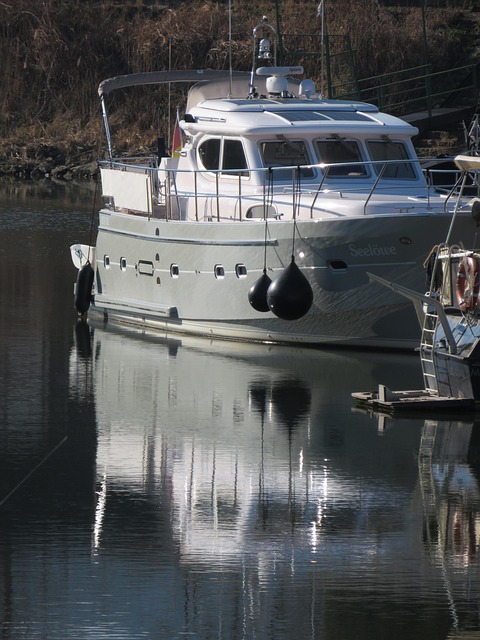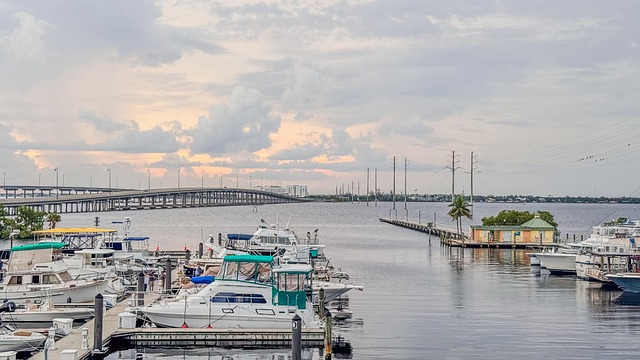How Technology is Changing the Standards of Marine Operations

In 2024, CMA CGM partnered with Google to apply AI across global marine operations. The company used Google’s data systems to cut delivery times, reduce fuel usage, optimize routes, and lower emissions. The partnership marked a shift as large maritime businesses began applying digital tools to scale, compete, and adapt fast.
This example shows that technology in marine operations now forces you to rethink how you manage your strategy and support stronger operational control daily. The industry, once driven by manual processes, now uses data systems that raise performance, boost safety, and increase accountability. Smart marine technologies help you reduce costs, track vessel activity precisely, and meet strict regulatory demands without delays or confusion. You gain faster insights, respond to risks sooner, and make better decisions across all business areas.
This blog covers key marine technology trends, real-world results, and how you apply technology in marine operations to stay competitive.
The digital revolution in marine operations
Marine operations no longer rely on paper logs, radio calls, and isolated systems. What once took hours of manual coordination now happens in seconds through data-driven systems. For operators, the shift is mandatory for survival in a competitive and regulated industry.
Let’s take a look at the digital transformation of the marine industry.
From traditional to smart marine technology
Maritime operations have moved away from chart plotting and manual reporting to automated systems and integrated platforms. Conventional models relied on human memory, stand-alone processes, and reactive decision-making. Such systems created delays, safety risks, and inefficiencies.
The new marine technology changes the equation. Automated navigation, remote diagnostics, real-time tracking, and AI-based route optimization now set the standard. Operators adopt these tools to modernize, meet strict compliance demands, cut fuel use, and improve turnaround times.
In fact, robotic systems are now responsible for a 20% increase in order fulfillment rate and a 15% reduction in errors. Variables including the greater demand for efficiency, increased concern over safety, and more regulations related to environmental factors are driving the market towards more inventive solutions. These innovations create a greater amount of precision, transparency, and scalability not formerly possible.
Benefits of marine technology trends

Adopting advanced marine technologies unlocks clear operational benefits across cost, safety, decision-making, and environmental performance. Let’s take a look at some of these benefits:
A. Cost savings
Automation cuts operational costs because machines handle routine tasks with higher speed and accuracy than manual processes allow. A recent study suggested that AI-powered systems adjust navigation in real time using live weather and performance data to reduce fuel use by 10%. These tools also shorten transit times by 5% because ships follow optimized routes that avoid traffic and bad weather.
Likewise, automated cargo handling accelerates loading, unloading, and inventory monitoring, eliminating human error and decreasing port turnaround time. As machines perform repetitive tasks, teams concentrate on high-value tasks that increase productivity and decrease accident possibilities.
B. Boosted safety measures
Technology upgrades safety with integrated sensors, real-time alerts, and 24/7 monitoring that spot problems before they escalate. Crews receive real-time views into equipment condition, and shore-based teams monitor conditions and respond before issues turn into crises.
For instance, the ISPS Code and improvements in maritime technology, including secure port fencing, biometric access control, high-definition surveillance, and advanced inspection tools, have notably improved maritime security by providing proactive threat detection and response.
C. Real-time decision-making
Live metrics give operators visibility into cargo location, route conditions, and equipment status so they can act without delays. You respond to disruptions faster because every stakeholder gets consistent data simultaneously through shared dashboards.
For example, Maersk uses its remote container management (RCM) system to provide real-time data on refrigerated container (reefer) conditions throughout the voyage, including temperature, humidity, and location. This allows both onboard crews and shore-side teams to monitor cargo health, adjust conditions remotely if needed, and proactively respond to disruptions such as power failures or route changes, ensuring cargo integrity and reducing delays.
D. Environmental impact reduction
Sustainability targets become more achievable when emissions, fuel use, and waste generation are tracked through digital dashboards. Marine industry innovation now gives you verified data that proves environmental responsibility without needing manual logging or extra reporting steps.
In 2024, Amogy retrofitted a 67-year-old tugboat with carbon-free ammonia fuel to meet zero-emission propulsion standards. This shift matches the International Maritime Organization’s goals and gives marine operators a viable clean energy alternative today.
DockMaster, a digital marine management system, contributes to this shift by connecting every part of your operation under one platform. With DockMaster, you can manage reservations, billing, vessel tracking, and reporting without switching between tools or losing time to manual entry. Its VisualMarina® tool lets you view slip availability, schedule vessel movement, and track arrivals directly from one screen.
Additionally, you can use inventory management tools to categorize parts, view quantity updates instantly, and manage resources across every location without delay. The point of sale (POS) tools with secure terminals let you process transactions fast and link purchases directly to available inventory. Plus, financial management generates entries instantly, records every update, and pushes data into your general ledger with full audit history.
7 technologies transforming marine operations

Digital transformation in the marine industry integrates advanced technologies into every part of marine operations to boost efficiency. Here's how each technology drives this shift and changes how you operate at sea.
1. Marine management software
Today’s all-in-one marina management platforms are helping businesses like yours handle everything, from slip reservations and inventory to service work orders and billing. Instead of jumping between spreadsheets, calendars, and paper records, teams can track all operations from a single dashboard.
With a system like DockMaster, you can schedule and bill services, manage transient guests, track parts and labor, automate communications, and even integrate with POS systems and QuickBooks. It’s the operational core your marina or yard needs to run more smoothly and professionally.
2. Web-based access and mobile apps
Your team isn't always behind a desk, so why should your tools be?
Cloud-based marina management solutions with mobile functionality allow staff to update service orders, review work histories, and check-in guests on the go, right from the dock or the yard.
This mobility reduces delays and improves coordination between front desk staff, technicians, and yard workers. Plus, customers enjoy faster, more responsive service.
3. Automated billing and invoicing
Manual billing leaves too much room for error, and time wasted. Today’s systems offer automated billing for everything from monthly dockage and utilities to fueling and parts. This ensures accurate, timely invoicing while freeing up staff to focus on high-touch customer service.
With DockMaster, you can also set up recurring charges, track outstanding balances, and simplify collections, all while ensuring compliance with your own pricing policies.
4. Integrated parts and service management
Boatyards and service centers rely on tight coordination between the service desk and inventory control. Integrated parts and service modules make it easy to assign parts to a work order, track usage in real time, and reorder what you need automatically.
It eliminates guesswork, reduces downtime, and ensures every job is profitable. Even better? Your techs always have the right parts when they need them.
5. Digital work orders and scheduling
Paperwork slows everyone down. With digital work orders, you can assign tasks to techs, check status updates, and view service history all in one place. Additionally, smart scheduling features allow managers to view resource availability and prioritize urgent jobs without overbooking.
This streamlines yard operations and ensures clear accountability. Plus, digital records are always accessible, which is great for customer transparency and future planning.
6. Customer portals and self-service tools
Customers today expect self-service. Modern marinas and dealerships can offer online portals where boat owners can book slips, approve service estimates, view invoices, and make payments, all without needing to call or email.
These tools elevate the customer experience, reduce phone traffic, and let your team focus on high-value interactions. A win-win for modern marine businesses.
7. Reporting and business intelligence
You can’t improve what you don’t measure. Built-in reporting and analytics tools help marina managers make smarter decisions by showing real-time data on occupancy rates, service performance, seasonal trends, technician productivity, and more.
From custom service reports tied to work orders, inventory, and mobile time tracking, to detailed financial reporting across A/R, A/P, G/L, and bank reconciliation, every department can access the data they need to make smarter decisions. You can track technician productivity, monitor seasonal service trends, reconcile payments, and forecast revenue, all from one connected platform. The ability to generate, customize, and act on these reports helps your team stay proactive, not reactive.
8. Cybersecurity solutions
Cybersecurity reports in 2024 recorded over 1,800 maritime vessels targeted in just the first half of the year. Attackers moved beyond phishing and now use command and control attacks to steal data and disrupt operations. AI-powered threats hit vessels with precision and bypass most traditional cyber defense systems in place today. In fact, the average cost of each attack now exceeds $550,000, forcing companies to rethink digital protection.
Cybersecurity solutions are designed to safeguard against malicious attacks, data breaches, and system failures that could disrupt operations. Without proper protection, operations can face severe financial losses, legal issues, and regulatory penalties that hurt long-term growth.
How technology is improving marine safety
The marine industry uses smart systems to reduce accidents, avoid delays, and improve safety in challenging conditions. Here’s how:
1. Early-warning systems & remote monitoring
The shipping industry uses IoT and connected devices to detect hazards early and alert operators before damage occurs. Sensors track equipment health, sea conditions, and gas leaks while sending real-time alerts directly to control centers. Crews act on these alerts without delay and stop minor issues before they grow into critical failures.
The 2024 edition of The Future of Maritime Safety Report from Inmarsat Maritime shows a drop in GMDSS distress calls. From 2018 to 2023, distress calls averaged 799 per year, but numbers fell in 2023 alone. Remote monitoring gives constant visibility into ship conditions and helps crews identify risks without boarding or halting operations. Operators receive clear alerts and updated data throughout the voyage, which helps them detect and fix problems early.
2. Training and software support for operational excellence
Technology only adds value when your team knows how to use it. That’s why DockMaster offers tailored training programs that help marina staff, from service writers to inventory managers, master every module with confidence. Our professional services team delivers hands-on education covering everything from work order creation and POS setup to advanced accounting and storage billing processes.
DockMaster’s training curriculum includes:
-
Service management fundamentals: Learn to create templates, estimates, work orders, enter charges, and handle service billing
-
Inventory management: Covers file maintenance, barcode scanning, inventory adjustments, and pricing
-
Point of sale (POS) operations: Walks through sales, discounts, refunds, special orders, and end-of-day POS procedures
-
Marina management essentials: Teaches billing, storage setup, waitlist management, and VisualMarina reporting
-
Sales & contract accounting: Covers contract closings, accruals, commission tracking, and serialized unit swaps
-
General accounting & balancing: Includes daily/monthly/year-end closings, GL posting, and balancing techniques
DockMaster also offers one-on-one online and on-site training tailored to your team’s needs.
Real-world examples of digital transformation: Prince William Marine
Prince William Marine, established in 1959, spans 17 acres of waterfront property. The business offers new and used Sea Ray and Baja boats, 250 dry stack slips, and 350 wet slips. In addition to boat sales, they provide maintenance, parts, and marina storage services. The dealership earned recognition, ranking #5 in the Boating Industry’s Top 100 in 2005.
As a full-service marina, Prince William Marine found it challenging to manage multiple business units under one roof. With five distinct profit centers, including new boat sales, used boat sales, parts, service, and marina storage, tracking operations and customer data proved difficult. The marina also needed a solution to integrate sales, service, and inventory systems while providing accurate financial reporting.
In 1999, Prince William Marine adopted DockMaster to handle its diverse operations. The system integrated all functions, from sales and service to inventory management. DockMaster tracked inventory, created contracts, and managed customer data for boat sales. It also simplified work orders, repair tickets, technician tracking, and warranty claims in the service department. The system facilitated parts ordering and inventory control. Financial reporting across departments became easier, enabling better decision-making.
The system eliminated the need for multiple separate platforms and reduced the risk of errors. Sales and service processes became faster, allowing the marina to serve customers more effectively. DockMaster’s ability to integrate financial reporting helped the marina track profitability at the department level. The system’s reports helped managers make informed decisions and compare performance against industry standards.
With DockMaster, Prince William Marine continues to streamline operations, grow revenue, and maintain its position as a top dealer in the boating industry.
Overcoming implementation challenges
As the maritime industry adopts technological advancements, businesses face challenges when integrating new systems. Let’s explore some of these key challenges:
1. Legacy systems integration
Marine businesses often struggle with integrating new technologies with legacy systems. Marinas, boatyards, service yards, and boat dealerships frequently rely on outdated, non-digital platforms that hinder the adoption of modern solutions. However, APIs (application programming interfaces) and middleware allow new technologies to work with existing systems.
For example, DockMaster integrates with FuelCloud and MarineSync to bridge the gap between legacy systems and modern technology. FuelCloud integration enables real-time fuel inventory tracking, automated pricing, and accurate fuel sales reporting. The platform’s integration with MarineSync automates meter readings for water and electricity usage, offering detailed analytics and usage patterns. Automated alerts notify managers of unusual consumption, preventing potential issues before they escalate.
2. Skills & training gaps
As digital tools grow more complex, marine businesses need tech-savvy employees to manage advanced systems and data-driven processes. Many struggle to find and train workers with the right skills. To tackle this, you can provide ongoing training and hire skilled personnel.
DockMaster centralizes maintenance tasks within a single platform, removing the need for spreadsheets, paper logs, and multiple software systems. You can assign tasks, track progress, and monitor completion all in one place. Managers gain a clear overview of infrastructure maintenance at all times.
With DockMaster, you can efficiently schedule maintenance tasks. The software enables you to assign work to technicians, schedule deadlines, and monitor real-time progress. With this transparency, you can complete emergency repairs and ensure timely scheduled maintenance without any delays. DockMaster's preventive maintenance scheduling features enable you to prevent potential equipment breakdowns. Automating these processes prolongs asset life, reduces repair expenses, and prevents downtime.
You can also allocate resources by assigning the right technicians, tools, and materials to each task. DockMaster assists you in planning labor and resource requirements so that every job is efficiently completed.
3. Cost vs. ROI
The initial investment in technology might appear to be costly, yet the long-term return on investment (ROI) may often offset the cost. Therefore, it's crucial to begin small and grow smart. To accomplish that, you must prioritize updating major technologies, such as automation or cloud-based systems. This allows you to test and measure before making bigger investments.
With DockMaster, you can effectively control parts and fuel inventory. The system consolidates ordering and receiving into accounts payable so that you can easily create and track purchase orders. It also processes special orders for service, POS, warehouse, and e-commerce order processing.
You can track stock levels and benefit from robust reporting tools to monitor low stock, inventory valuation, and order status. The system also carries out analysis of stock movement, giving you insightful information about your inventory's flow. You can also print easily pricing labels, generate barcodes, and design custom label templates, which can be batch-printed for more convenience.
Future of marine operations: What’s next?
The future of marine operations depends on robust, unified software solutions that help you manage every aspect of your marina or boatyard efficiently. DockMaster’s integrated platform delivers comprehensive tools designed to optimize your operations and prepare your business for growth.
-
Automate routine tasks with seamless service management and inventory integration
-
Track technician productivity and service performance using real-time reporting
-
Manage work orders, mobile time tracking, and eSignatures to accelerate service delivery
-
Handle billing, storage, POS, and accounting through a single, connected system
-
Train your team with role-based programs to master each module confidently
To comply, you need to develop infrastructure that accommodates these technologies. The systems need to be upgraded for larger data volumes and for heavy computing needs. Additionally, adopting modular solutions that integrate with existing systems allows seamless transitions as new technologies emerge.
As regulatory frameworks evolve, you must prepare for compliance with stricter environmental and safety standards. Implementing systems that can adapt to these shifts will minimize disruptions. Staying ahead of regulatory changes will require ongoing monitoring of industry trends and government policies to ensure operational readiness and mitigate compliance risks.
Creating a tech roadmap for your marine business
To create a practical tech roadmap for your marine business, assess your current technological capabilities. Identify gaps and weaknesses that prevent efficient operations. Prioritize technologies that deliver the highest impact, such as automation, data analytics, and cloud integration. These technologies can optimize service, inventory management, and customer experience.
Plan to train your workforce to adapt to these technologies. Develop a phased rollout plan to prevent disruption during implementation. Introduce new systems in stages, starting with high-priority areas.
Start small to test and refine your approach, but always keep long-term scalability in mind. Invest in solutions that grow with your business. For instance, DockMaster offers a customizable platform that adapts as your operations expand. This flexibility allows you to scale your tech infrastructure without overhauling systems frequently.
So, what are you waiting for? Contact us today to transform your marine business with DockMaster’s scalable tech solutions.
Key takeaways
-
Digital transformation is crucial for keeping marine operations competitive and future-ready
-
Smart technologies enhance cost efficiency, improve safety measures, and reduce environmental impact
-
Integrated systems like DockMaster provide all-in-one solutions to streamline operations and boost productivity
-
Successful transformation requires strategic planning, ongoing training, and adopting the right technological tools
-
Staying ahead in the industry means continually adapting to emerging innovations and trends
FAQs
1. What are the latest marine technology trends reshaping operations?
The latest trends focus on unified software solutions that centralize operations, integrate inventory and service management, and deliver real-time data to improve decision-making and efficiency.
2. How is digital transformation changing the marine industry?
Digital transformation streamlines marine operations through automation, data analytics, and IoT, enhancing decision-making, reducing costs, and improving safety. Marina management software like DockMaster centralizes operations and boosts overall productivity and compliance.
3. What technologies are improving marine safety standards?
Integrated platforms with real-time monitoring, mobile tracking, and alert systems help you manage crew safety, equipment status, and emergency response effectively.
4. What does the future of marine operations look like with smart innovations?
The future depends on a unified product suite that scales with your business. It offers customization, adapts to changing needs, and acts as a reliable technology partner to support growth and compliance.
